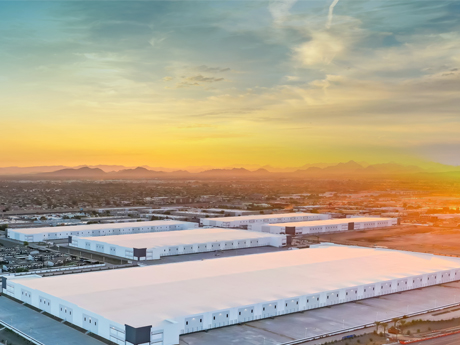— By Anthony Lydon, Executive Managing Director, JLL —
At $403 billion in annual gross domestic product, Arizona is now the nation’s 18th largest GDP economy, recently passing Minnesota and Indiana. With its expected growth over the next 24 months, the state is on track to become the nation’s 16th largest GDP economy, surpassing Tennessee and Maryland.
Like a shortlist of other fortunate U.S. markets, Arizona can credit a portion of this growth to its thriving logistics sector. The potential that industrial real estate offers for nearshoring — that commanding force with the power to rapidly diversify and expand a local economy.
In Arizona alone, every $1 spent in the logistics industry has a $2 to $2.50 “multiplier effect” in the categories of earnings, revenue and jobs. The ability to capture that growth has been transformed in recent years by the CHIPS Act. This has provided, among other things, a 25 percent tax credit for investing in facilities that manufacture semiconductors or related manufacturing equipment. The Inflation Reduction Act has also provided more than $270 million in tax credits for clean energy projects involving solar, wind, hydrogen, carbon sequestration and EV charging.
These programs played a role in attracting TSMC, whose projects will involve more than 10,000 construction workers, dozens of third-party employers and will create 10,000 high-tech jobs, 4,500 of those direct TSMC positions.
A refocus on manufacturing and technology is also attracting solar and related users to Arizona, along with the bevy of vendors needed to support these types of mega tenants. The trend has some forward-thinking developers upping their construction game when it comes to the hard and soft amenities they’re incorporating into new Arizona industrial projects. It has also increased the demand for — and construction of — the mid-size industrial buildings needed to support an incoming flux of mid-size vendor tenants.
Collectively, these activities position Arizona (and rising industrial markets like it) as prime opportunities to reverse the impacts of offshoring. This would bring with it a return of high-quality jobs, a stronger domestic supply chain, and new opportunities for research and innovation.
Empty grocery store shelves during the pandemic offered a stark example of how quickly a flawed supply chain can immobilize a culture. The reshoring of manufacturing and technology takes those concerns to their highest translation. They also give industrial high performers like Arizona the opportunity to make the U.S. more secure and sufficient, add untold advantages to the local economy and, with good fortune, emerge as a new generation of Tier 1 industrial markets.


